Crape Myrtles in containers?
We have two Crape Myrtles that have been in the ground for a number of years, and as they were originally planted too close together (and too close to other shrubs as well) we want to transplant them. One will go into the ground in another spot, but my sister wonders if the second one could go into a container. Any thoughts/advice? Thanks, Laura
Comments (21)
rhizo_1 (North AL) zone 7
16 years agolast modified: 9 years agoYou know, don't you, that this is a very bad time of year to tackle a job like this?
The success of the transplanting depends upon the size of the plants, and how carefully the procedure has been undertaken. Field grown crape myrtles can be grown in containers, as long as the recieving medium is very coarse (porous) and fast draining. You can't use the soil out of the ground as the planting medium.
hitexplanter
16 years agolast modified: 9 years agoThis a job for winter or very early in the spring before they break dormancy and as Rhizo says use a very course media that is fast draining.
Happy Growing DavidRelated Professionals
Foothill Ranch Landscape Architects & Landscape Designers · Frisco Landscape Contractors · Brookside Landscape Contractors · Euclid Landscape Contractors · Lemay Landscape Contractors · Roswell Landscape Contractors · Welby Landscape Contractors · Elmhurst Solar Energy Systems · Emeryville Solar Energy Systems · Woodland Hills Solar Energy Systems · Seminole Window Contractors · Glenpool Fence Contractors · Paramount Fence Contractors · Prior Lake Fence Contractors · Saint Louis Park Fence Contractorsorganic_tosca
Original Author16 years agolast modified: 9 years agoYes, we are not thinking of doing it now, it's way too hot here now (105 today). We are just kind of discussing what to do later on. I think my major concern was that I thought the root ball might be too big for the half-barrel - I've never dealt with this kind of transplanting. My experience has been limited to container gardening on a smaller scale (except for the flowers that are in that half-barrel this year). We thought we would do it in late October, when it is much cooler, but not really really cold, as it can be in January and even sometimes in December (we are in Central California's San Joaquin Valley). Not, of course, cold in the way it can be back east, but whole citrus orchards froze last winter - rare, but it can happen. I searched this forum and Trees and Shrubs for things relating to this, and I found something by Rhizo, as a matter of fact, that recommended doing it in cool weather. But if dead of winter is what is needed, that is what we'll do. I kind of had the idea that leaves still on the shrub when doing the job were a good thing, but as I say, I am a novice at this.
Lauracalistoga_al ca 15 usda 9
16 years agolast modified: 9 years agoI would wait until the tree is dormant,no leaves. You should expect that the roots will be reduced when planting in any container, and the top will need to be reduced also. This should not be a problem with Crape Myrtles, and the winter cold in your location will certainly not affect them. Al
organic_tosca
Original Author16 years agolast modified: 9 years agoWow, this is all really helpful! I want to thank all of you for a lot of great advice. I'm saving it all to my clippings, so I will have it when the time comes to do the job.
Laurarhizo_1 (North AL) zone 7
16 years agolast modified: 9 years agoThe old adage about removing top growth to compensate for root loss is something that we need to lose from our bank of good information. It's what I was taught many years ago, also, but it's time we trudged forward, lol!
In fact, the woody plant needs all of the foliage left on the plant so that the root growth response can be as rapid as possible. It is the photosynthesis processes that fuel the root formation.
Woody plants have a very specific carbon (energy) allocation process. They send send out metabolites to those areas of greatest need. In a transplanting process, the energy should go to the job of regrowing a root system.
Now, remember that pruning is a growth STIMILATING process. That response, too, is a function of repair. If we top prune a plant prior (or just after) to transplanting, then our shrub or tree cannot devote the energy it should to root development. Part of the reason is that the energy factories have been eliminated (leaves) and the other aspect is that of carbon allocation. Shoot response to pruning could also put a serious demand for water, a real problem for the severely limited root system.
Transplanting in the dormant season, when no leaves are present, makes good sense. The roots will still begin to establish themselves (though slowly) over the winter months. Zone 9 plants would expect to see lots of good root development throughout the winter. When spring rolls around, the tree or shrub will be in very good shape for the heavy demands of spring green up.
SO! The moral of this long, boring answer is that top pruning to compensate for root loss is no longer recommended.
poultryguy
16 years agolast modified: 9 years agoHello Rhizo_1,
Theories come and theories go... Some old adages shouldnt be thrown out just because theyÂre old.IÂve been transplanting professionally for over 20 years and have seen more transplants decline from rapid moisture loss due to excessive leaf surfaces than those whoÂve declined from not being able to re-grow roots sufficiently after having their tops "thinned out". Thinned out being the key phrase here, not chopped off. When possible you always want to have leaves remaining, at least enough to continue the processes of photosynthesis. I would always recommend thinning to scale as well as to shape and structure, although balancing out the plant will take priority.
Photosynthesis is part of a process, a process that requires the movement of water through the plant in order to function. With far more leaves than roots to supply them, youÂve got a pump that runs dry and burns itself out regardless of how much water you pour onto the root zone.
Whether you thin the plant out or not, itÂs still going to attempt to continue putting on new growth even with the reduced root structure. Thinning the top at transplanting time is nothing more than balancing out the plant, so that it can have a better chance of supporting the upper growth that it has while repairing itÂs root system. Even dormant season plantings should be balanced out when the root area is sufficiently less than the top. This applies to bare root, plants you dig from the garden and container plants whoÂs circling roots have been cut to encourage proper root growth. While fall is for planting, late fall and through the winter months is not. The vast majority of trees and shrubs, when planted in to cool soil, will literally sit there doing absolutely nothing until the soil warms. Which unfortunately, is typically after the upper part of the plant has begun sprouting with itÂs new spring attire. This is one of the main reasons why so many late fall and winter transplants donÂt do any better than if they had been done in early spring, because the supporting root structure hasnÂt been grown in keeping with the top.
Since life doesnÂt take place in a vacuum, we also have to look at other variables. Wind can desiccate new transplants in a matter of hours. The more leaf surface, the quicker the desiccation. Blazing hot sun will shut down plant growth of any kind until the temps go back below 90°-95° F (the reason why so many plants wilt in the afternoons and perk back up by evening, their stomata close to conserve moisture). Moisture content of the soil is just as critical for transplants, as too much can rot what roots remain, yet too little moisture will surely kill it.
Balance is the key...
Regards,
Danrhizo_1 (North AL) zone 7
16 years agolast modified: 9 years agoWe aren't discussing theories, but scientific fact. It's long been known that woody plants react in very complex ways in response to injury. Pruning to compensate for root loss is almost always counter productive, going against the actual physiological responses that the plants will have.
Luckily, we are able to observe more and more about plants as we become more sophisticated. At present, transplanting should no longer be an 'iffy' proposition. When done according to up-to-date horticultural practices, I'd expect a one hundred percent (long term) success rate.
poultryguy
16 years agolast modified: 9 years agoHow can you expect to get a 100% success rate with a living creature? That's just not a realistic expectation even under the most ideal, controlled circumstances.
If what you are saying is scientific fact, would you please give some references to the literature? It would be nice if we could read about this, as well as the trial results. How long were the trials run for, months, years, decades? How many different species were the trials conducted on? Were these experiements tested in the field or in a controlled environment, east coast to west coast, north to south?
Good, bad or indifferent, you can't expect people to change the way they do things without some sort of concrete proof that it is proven to actually work in the field under broad circumstances with a wide range of plant materials, both in the short term as well as the long term. To what extent can your techniques be utilized? Are there limiting parameters?
Regards,
Danrhizo_1 (North AL) zone 7
16 years agolast modified: 9 years agoDan,
I should have said 'as long as the plant is a healthy specimen'....and transplanting is done according to proper practices, I'd expect a one hundred percent success rate. I totally stand by that. So should you!
I'm afraid that the information about compensation pruning is so old that I certainly have no details about studies. I will suggest, however, that you google around and locate some of the many articles that will be available to you. (I'll link you to one.) If you use the word 'myth' in your search, you'll have more hits. Seriously.
Somewhere around thirty years ago, I learned that the hormones responsible for root production are manufactured in the shoot tips. Those studies go back to the world's earliest botanists, lol! Understanding the rest of the processes involving woody plant reactions followed. This isn't regional science, nor is it limited to a particular group of plants. It is exquisitely simple plant physiology. Compensatory pruning is called a myth (not my word) for very good reason. It simply doesn't stand up in the face of simple science. It raises its pesky little head once in a while here in the forums, but not very much anymore.
poultryguy
16 years agolast modified: 9 years agoHello again Rhizo_1,
I did far more reading today than I had planned (not a bad thing, lol). While none of the research that Ive come across was be any means complete or definitive, I did gain several insights to my own practices as well as those of the retail nursery industry as it pertains to "tried and true" methods regarding the transplanting of trees and shrubs.One article, regarding planting "myths and urban legends", detailed the myth that the pruning of woody plants stimulates their growth. Apparently, the overall re-growth of copiously pruned woody plants is less than that of non-pruned ones. That is, pruning doesnt "encourage" growth. It just cues dormant buds to begin growing.
Getting back to the subject at hand...
I found it interesting in the article regarding the California live oak, Quercus agrifolia, that they had decided not to include the higher initial mortality rate of non-pruned trees in the over-all 10 year study. With the removal of these initial deaths, the bias toward statistical data "for" survival of non-pruned trees was significantly higher than for that of the pruned trees. In this study, both the growth rates and gains for trunk growth and top growth were measured at regular intervals and it was found that the pruned trees, while recovering differently and at differing rates, did in fact show substantial recoveries using "old fashioned" methods. The full details and results cant truly be given at this time, as the "non-pruned" trees have only been in the ground for 5 years, whereas the pruned trees have come through the full 10 year trial period. Although, comparing the 5 year periods, the unpruned group has shown more growth in the girth of their trunks with negligible top growth gains, whereas the pruned group has shown negligible growth in their original girth, yet substantial growth rates of new branches to the point of being near recovery of their tops while also having become nearly established. When factoring in the initial numbers of trees, including the early "shock deaths", there is a higher percentage of survival amongst the "pruned" group of oaks.Reading between the lines is something that I have learned over the years as the most prudent way to weed through such a vast sea of snake oil remedies as well as urban mythologies. Even in the article you linked, there were several practices that were/are very difficult to swallow in any practical sense and give little reason to break from tradition. The "new" recommended practice of administering 1 to 1-1/2 gallon of water, per inch of trunk diameter, per day for the first two weeks after transplanting, every other day for the next three months and then once per week for the remainder of the establishment period is not only excessive, but a task that is quite impractical for most of us. From a purely financial aspect, it is nearly insurmountable... Aside from the watering bills it would incur, if we were to discuss a professionally planted landscape, residential or commercial, youre looking at maintenance fees for the full 3-5 year establishment period for #5 to #15 sized (container) landscape plants.
I hope youre not taking this personally, Im just addressing the issues that I see with using a completely opposite planting strategy based on incomplete studies and inconclusive evidence. After all if you look at the over-all results between the two groups, the only thing gained "after initial transplant shock losses" in a ten year period is, as they say, a "push". The whole point of the old method "is" the higher success rate of a larger overall percentage of transplants, which includes surviving initial transplant shock. Thats something that the current evidence has not shown for "non-pruned" transplanting. I also have to add that fungicides had to be added as "part of the process" in order to overcome the fact that copious amounts of water were used to establish the "non-pruned" trees, as well as microrhizzae inoculations.
The main point that was reinforced for me, was that the loss of too much root AND top was detrimental to the plants chances of survival, as both the roots and stems store carbohydrates, loosing to high a percentage of "both" was essentially like emptying the cupboards and starving the plant. I firmly believe that when it comes to plants, as well as any other living creature, balance is the answer. This balance was described very well in the article put out by the University of California, Davis, which was looking in to the viability of transplanting fully mature native (CA) live oaks to reestablish ecosystems in newly built urban communities. At the end of the study, both the higher costs as well as the substantial losses and high labor requirements were deemed to involved. In other side by side comparisons, the reactions of pruned vs unpruned transplants were exhibited as having differing rates of recovery "in differing areas at different times". Pruned plants recovered their "rate of growth" quicker, as the balance of root mass to top growth were reached sooner. The unpruned plants top growth was "suppressed" until their roots had regrown to match, which by the way, was measured over a similar amount of time comparatively.
Again, this would be considered a "push", if it were not for the demonstrated over-all higher success rate of the plants that were pruned. One point that does seem apparent as being important in any context, is that over pruning can be detrimental in most cases, transplanted or established. I know that I recommended "thinning" to compensate, but I certainly did not mean to sound as though I was recommending butchering. I always start with broken, crossing and dead branches, then thin to a main scaffold system. My newly transplanted trees and shrubs are always kept to a foliated framework that, while reduced by percentage, is still that of the original plants structure, form and over-all size/shape. I certainly dont water at excessive levels, as the vast majority of the plants I plant on our 13 aces are sufficiently distanced from a water supply. So the question then becomes, why would anyone adopt a new system that advocates not pruning transplants and watering at much higher volumes and rates of frequency, when the old system of thinning and modest watering volumes at a lower frequency continues to produce high establishment rates and lower initial mortality rates?
If it helps you to understand me, as well as my motivation, I cant recommend something to consumers that I cant back up in practice on my own place. Just out of curiosity I may just try out your proposed method starting tomorrow and see how four newly dug trees survive in a side by side test.Two groups of two, one group will have a pruned and an unpruned tree that will be watered at the recommended "higher rate and frequency", the other group of one pruned and one unpruned will be watered at the typically recommended rate as I normally use. Should be an interesting study. Lord knows there are plenty of trees that require relocation from my woods to my front yard. Gives me a good reason to check on the ginkgo I transplanted to the lower part of my property three weeks ago. ;)
Regards & best wishes,
Danrhizo_1 (North AL) zone 7
16 years agolast modified: 9 years agoI wouldn't advise doing any transplanting at this time of year. No matter what methods you espouse, lol! But good luck with your experimentation.
poultryguy
16 years agolast modified: 9 years agoThanks Rhizo_1.
I hope our discussion hasn't left Laura with more questions than she started with, lol.
Regards,
Danrixblonde
16 years agolast modified: 9 years agoI think that it will be fine.I recently just got a dwarf crape myrtle and planted in container and it's doing wonderful I have Beautiful blooms!
rhizo_1 (North AL) zone 7
16 years agolast modified: 9 years agoSpeaking of crape myrtles, we have a large pink one along one side of the house that is in full bloom just now. The fragrance of crapes is so appealing, not too heavy or cloying....sort of clean and crisp. After a brief rain shower yesterday, the mulched bed around this tree was covered with flower petals, and looked very much like pink snow.
organic_tosca
Original Author16 years agolast modified: 9 years agoActually, folks, Laura IS a little confused at this point! But, as I said, I've saved clippings of everybody's advice, and I'll have plenty of time to mull it all over. I feel encouraged, anyway - when I posted my question, I really thought that probably the project wasn't a good thing to try and that everyone would say so! So thanks again, everyone, for the great information, advice, and encouragement!
Laurarhizo_1 (North AL) zone 7
16 years agolast modified: 9 years agoLaura, we didn't serve you very well, did we? ;-)
Transplanting an established tree can be 'iffy'. Nurseries dig large shrubs and trees out of their fields but they are cultivated and root pruned on a pretty regular basis. It's a bit more challenging for us. Having an understanding of how much of a radius from the trunk to dig is important; how to take care of the root ball after digging, the right tools, blah, blah. There are many ways to accomplish the job successfully, but more things that can go wrong.
The larger the plant, the more difficult the transition (for the plant) will be. The type of potting medium is essential for success, too. I cannot stress that enough. As a long time bonsai enthusiast, I know that plants can regenerate a vigorous root system very quickly, but only if the planting mix is very porous, fast draining, and oxygen rich.
organic_tosca
Original Author16 years agolast modified: 9 years agoWell, Rhizo, I now feel a little less courageous about the container part of this project. Both of these shrubs have to come out of the ground, and I am in favor of putting one in the ground (in another place) and just letting the other one go for mulch. I hate to ever do that, but I'm feeling increasingly unsure that I am up to this whole thing. My sister wants very much to have one go in the tub container, though, and this IS her house and yard (I live with her since I retired, a few years after her husband died). For the most part, she gives me pretty much carte blanche in choosing the plants (although she really wants only containers - the non-container crape myrtle being transplanted to another in-ground location is for filling a particular space that need something for privacy), so when she says she really wants something, I try to do it. These two crape myrtles, as I mentioned before, have been in the ground for quite a few years, but they had been subjected to the "crape murder" pruning method by the regular landscape people over and over and looked terrible. Winter before last, one of my sister's sons cut them back to the ground, and they have both regrown quite well. Now they are about 3 - 4 feet tall. But I have no idea what size the root ball might be. I guess this is really why I don't feel very confident - I don't like the idea of putting that root ball into a strait-jacket. I also am not sure I can manage the root-pruning if it is necessary. I think the plant will look good in the half-barrel - I mean, it won't be out of proportion - but I'm in my early seventies, and this is beginning to sound like more than I can handle. I thought I'd better fill in these details, since I think my concerns needed to be clarified.
Laurapoultryguy
16 years agolast modified: 9 years agoHello Laura,
The worst that can happen is... you tried. Gardening is suppose to be a "fun thing" and quite honestly, it's the trial and error that ads to the fun. Do what you feel you're capable of and don't be concerned about experimenting. You may find that the root system isn't quite as extensive as you first thought, but you won't know for sure until you start digging.As for being successful, regardless of what we do, in the end it's still up to the plant. I've seen the least likely candidates for survival pull through and grow like gang busters, yet other prime candidates for survival wither and die for no apparent reason.
Speaking strictly of crape myrtles, if the trunk is less than three inches in diameter it should prove to have managable roots and a fair chance of surviving the transplant. Obviously the smaller the better, but please don't be discouraged in any event, the worst you can do is try.
I would recommend giving them a good long soak several days to a week prior to digging them so the soil will be in a workable condition. Have a pair of lopping shears handy along with your smaller hand pruners. If you run in to large roots, it's easier to cut them with the loppers than it is to try and chop them off with a shovel. It's also better for the plant that way and easier on you. Considering that the top was cut all the way back so recently you shouldn't have to worry about any further trimming.
Regards,
Danorganic_tosca
Original Author16 years agolast modified: 9 years agoThank you, Dan. All that about the root pruning is REALLY, REALLY helpful. also helpful: the perspective from which to look at this endeavor! I"ve only been gardening for the last two years, since I retired, and I do need to remember that the world is not going to end if my transplants don't work out (that thinking must be a hangover from the Working World). What you say is absolutely right, gardening should be fun, and mostly it has been fun for me. And all the seeds and plants and pots I've worked on this last two years have not necessarily worked out - I'd say it's about half-and-half. But when it DOES work, it's such a pleasure! Thanks again,
Laura
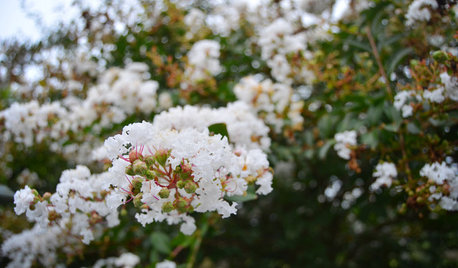
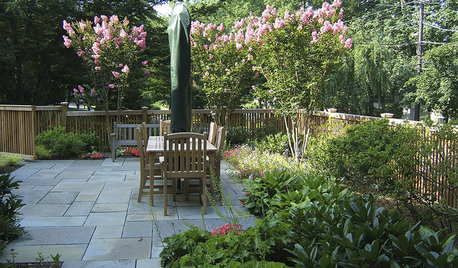
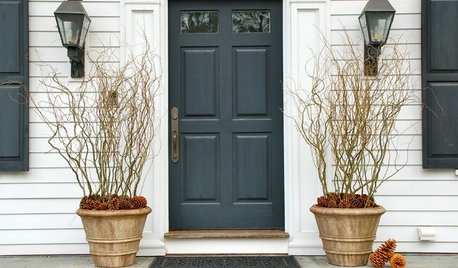


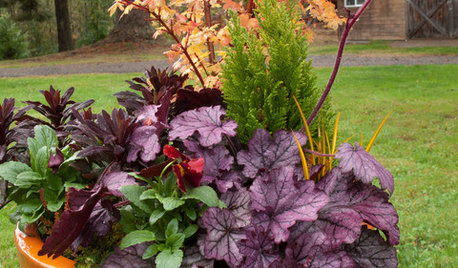
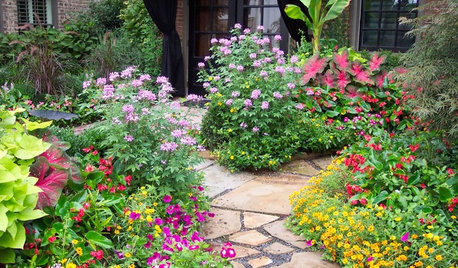
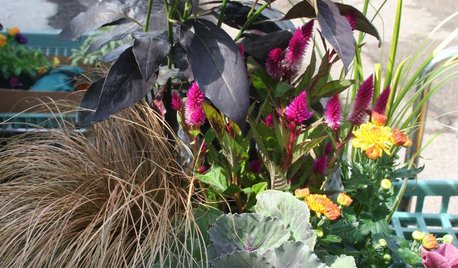











poultryguy